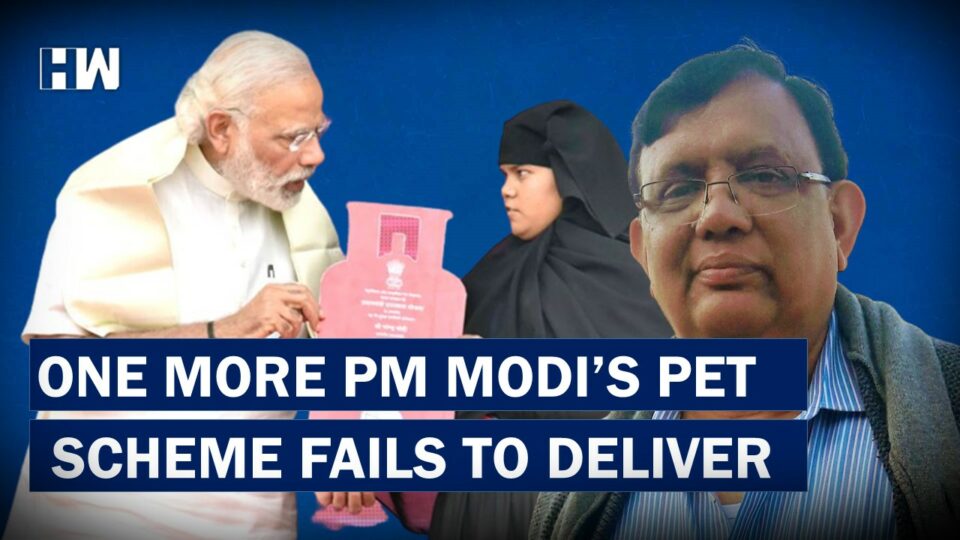LPG Subsidy: In 2021-22, LPG (liquefied petroleum gas) consumption constituted about 13 percent of total petroleum product consumption. About 90 percent of LPG was consumed by households, 8 percent by industrial users, and 2 percent by vehicles. Over 60 percent of LPG was imported and over 99 percent of domestic production was from public sector refineries. LPG consumption grew by over 84 percent from about 15.3 MT (million tonnes) in 2011-12 to 28.3 MT in 2021-22. Most of the growth was accounted for by packaged LPG consumed by households and commercial entities. Domestic LPG consumption grew by over 76 percent between 2013-14 and 2021-22 whilst commercial consumption grew by over 108 percent. LPG Access In the 1970s, LPG stoves started replacing kerosene stoves in urban households when new refineries in India started producing bottled LPG. In 1977, there were only 3.2 million LPG connections across India (or 2.5 percent of the households). In 1984, the number of LPG connections tripled to 8.8 million (5 percent of households) and in 1990 the number of LPG connections increased to 19.6 million (11 percent of households). LPG connections grew at over 14 percent in the period between 1977 and 1990 which was above the rate of growth for electricity connections but the starting base for LPG was very small. Subsidy offered by the government that amounted to roughly half the cost of an LPG cylinder was the primary driver behind this growth which benefited middle-class families in cities and towns. According to the fifth National Family Health Survey 2019-2021 (NFHS-5) carried out by the Ministry of Health & Family Welfare, 88.6 percent of urban households use LPG or piped natural gas (PNG) as the primary cooking fuel, while only 42 percent of rural households use LPG or natural gas. Overall, only about 56.2 percent of the population used LPG or PNG as the primary cooking fuel. About 8.9 percent of urban households used wood, straw, shrubs, grass, crop waste, dung, and other materials (solid fuels) as primary cooking fuel whilst 54.6 percent of rural households used solid fuels for cooking. Nationally about 43.3 percent of households in India continue to use solid biomass as the primary fuel for cooking. Pradhan Mantri Ujjwala Yojana (PMUY) was launched by Prime Minister of India Narendra Modi on 1 May 2016 to distribute 50 million LPG connections to women of Below Poverty Line (BPL) families. A budgetary allocation of ₹8000 Crores (US$1.0 billion) was made for the scheme. However, 6 years down the line, PMUY failed to take off. Similar to demonetization, one more scheme launched with great fanfare did not meet its objective and the BJP stopped talking about it. But if you look at the history of the evolution of domestic LPG in our country, you would find that it was the policies of the Indian National Congress that made the real difference. The foundation work was all done by the Congress party and they handed over the baton to Mr. Modi. Prime Minister Modi had to make the change. So, the Ujjwala scheme was conceptualized, and implemented yet failed. The main reason was that the extent of poverty was misunderstood by Modi and his inexperience in governance showed up. Poor people in this country can always manage a one-time large expense. It is the recurring expense that hurts them the most. Congress increased the reach of LPG but was generous in providing subsidies to all sections of the people. The LPG cylinder price was kept artificially low during the UPA-1 and UPA-2 regimes. The poor, lower middle class, and the middle class was kept happy. Modi’s approach was to assist the poor to buy the initial connection and one LPG cylinder. About 8 crores beneficiaries were added till 2021. But many of them did not have the money to buy the next cylinder. The prices sky-rocketed and the subsidy was removed. Mr. Modi tried to hijack and rebrand the Congress schemes. Nothing of what the BJP would have been possible without AADHAR, Direct Benefit Transfer, and bank accounts. All started by the Congress between 2010 to 2013. The BJP failed in yet one more grand scheme.
#PMModi #PMUY #LPGSubsidy #DirectBenefitTransfer #HWNews #LPG #DrManmohanSingh #LPGCylinder #MiddleClass #NFHS #Subsidy #PNG #NaturalGas #BPL #BJP #Congress
As an independent media platform, we do not take advertisements from governments and corporate houses. It is you, our readers, who have supported us on our journey to do honest and unbiased journalism. Please contribute, so that we can continue to do the same in future.

